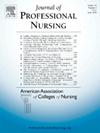落后设计在卫生专业教育中的应用述评
IF 2.8
3区 医学
Q1 NURSING
引用次数: 0
摘要
背景护理教育的变革迫使护理课程向向后设计驱动的能力和临床判断为基础的课程设计过渡。对逆向设计在护理中的应用缺乏指导。目的:本快速回顾旨在确定逆向设计(BWD)在医疗保健专业教育计划中的使用、实施和结果。方法采用快速审查方法临时指南,结合PRISMA- p方案、PRISMA 2020解释和阐述以及PRISMA 2020报告指南对文献进行快速审查。结果没有经验证据表明BWD在实现基于能力的结果方面的有效性。结果集中在学生和教师的优势和好处上,并提供了实施技巧。BWD更好地保证了课程学习成果、评估和学习活动的一致性。在以学习者为中心的BWD方法中,学生的参与度和对技能的掌握程度更高,教师的效率也更高。结论本研究结果显示了医学基础知识在保健教育中的应用,并为将医学基础知识作为一种有效的护理课程框架提供了模型。我们的回顾显示了在护理教育中采用标准化课程框架的重要性。本文章由计算机程序翻译,如有差异,请以英文原文为准。
Utilization of backward design in health professional education: A rapid review
Background
Transformative changes in nursing education are compelling nursing programs to transition to a backward design-driven competency- and clinical judgment-based curriculum design. Little guidance exists on backward design application in nursing.
Purpose
This rapid review aims to identify what is known about the use, implementation, and outcomes of backward design (BWD) in healthcare professional education programs.
Methods
A rapid review of the literature was conducted using the Interim Guidance for Rapid Reviews Methods in concert with the PRISMA-P protocol, the PRISMA 2020 explanation and elaboration, and the PRISMA 2020 reporting guidelines.
Results
There was no empirical evidence of the efficacy of BWD in achieving competency-based outcomes. Results focused on strengths and benefits for students and faculty and provided implementation tips. BWD better assured the alignment of course learning outcomes, assessments, and learning activities. There was more student engagement and mastery of skills, and greater faculty effectiveness in the learner-centered BWD approach.
Conclusions
Our findings show the utility of BWD in healthcare education and provide models for application of BWD as an effective curricular framework in nursing. Our review shows the importance of the adoption of a standardized curricular framework in nursing education.
求助全文
通过发布文献求助,成功后即可免费获取论文全文。
去求助
来源期刊
CiteScore
4.80
自引率
8.00%
发文量
153
审稿时长
52 days
期刊介绍:
The Journal will accept articles that focus on baccalaureate and higher degree nursing education, educational research, policy related to education, and education and practice partnerships. Reports of original work, research, reviews, insightful descriptions, and policy papers focusing on baccalaureate and graduate nursing education will be published.

 求助内容:
求助内容: 应助结果提醒方式:
应助结果提醒方式:


